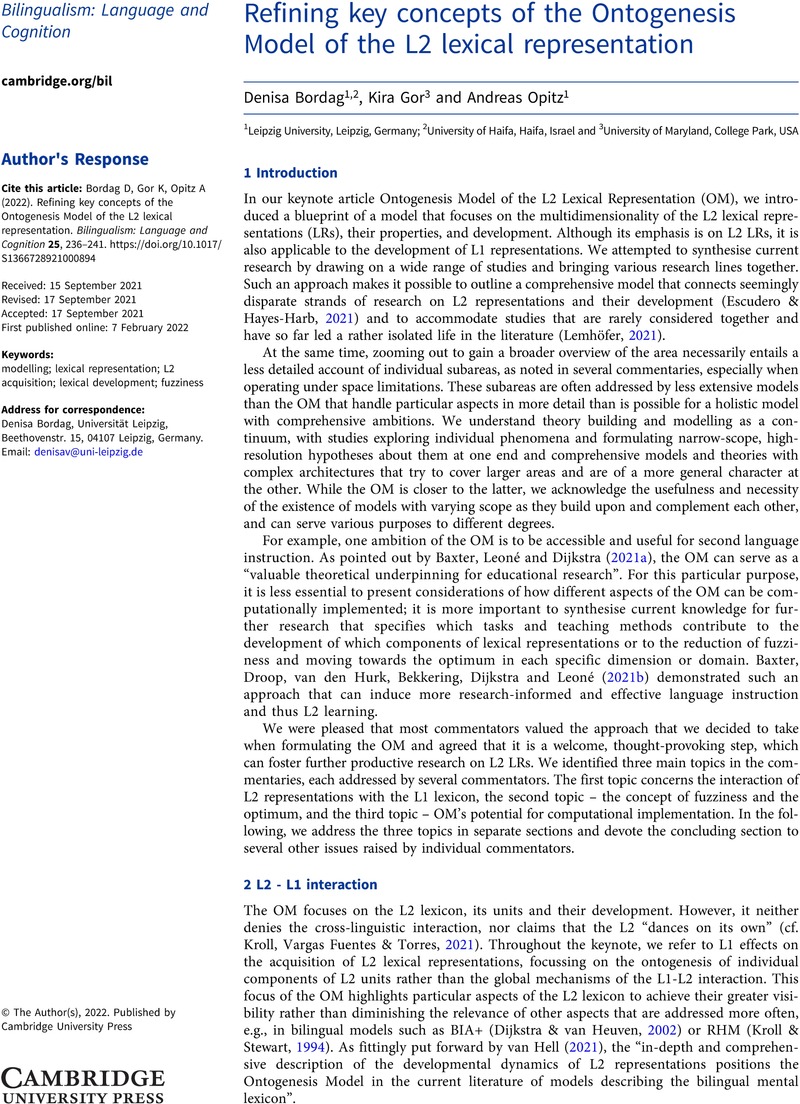Crossref Citations
This article has been cited by the following publications. This list is generated based on data provided by Crossref.
Otwinowska, Agnieszka
Silva, Breno B.
Broniś, Olga
Ambroziak, Agata
Janczarska, Aleksandra
Jastrzębski, Borys
and
Foryś-Nogala, Małgorzata
2025.
Learning L2-L3 cognates and L1-L2-L3 cognates in class: A longitudinal experiment in raising awareness of L2-L3 similarity.
Lingua,
Vol. 328,
Issue. ,
p.
104057.
Opitz, Andreas
Bordag, Denisa
and
Furgoni, Alberto
2025.
Morphosyntactic underspecification affects the processing of verbal forms at different levels of abstraction in L1 and L2 German.
Bilingualism: Language and Cognition,
Vol. 28,
Issue. 1,
p.
185.
Bordag, Denisa
and
Opitz, Andreas
2025.
Retention of grammatical information by L1 and L2 readers: The role of form and meaning.
Journal of Memory and Language,
Vol. 141,
Issue. ,
p.
104605.



